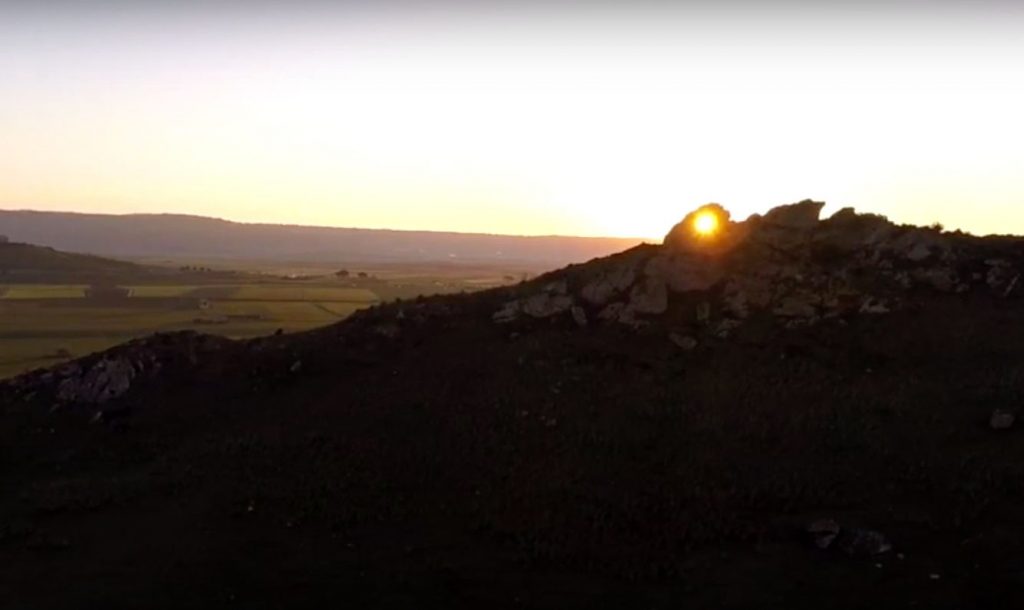“This obviously reinforces the sacrality of the site.” – Archaeologist Giuseppe La Spina.

PHOTO: livescience.com
SICILY, ITALY – Italian Archaeologists working on a site on the southern coast of Sicily have discovered what they believe to be a rock used by neolithic humans to tell time.
The rock was discovered on November 30th of 2016 when a team surveying some World War II-era bunkers stumbled across it accidentally. It’s on the southern coast of Sicily near an ancient necropolis. The hill was topped with a man-made rock formation crowned with a special rock with a 3.2-foot diameter hole drilled into it.
Lead archaeologist of the team now working on the site, Giuseppe La Spina, said that it was obvious to him that they were dealing with a man-made hole, but without further research, the team had no way of knowing what exactly the stone was used for. However, he had a theory: La Spina believed that prehistoric humans used the hole in the rock to tell time. How, though?
The archaeologists decided to test their theory this past December, at the winter solstice of 2016. They used a compass, a video camera on a GPS-equipped drone, and some other cameras to camp out and test and see if the rising solstice sun would align with the rock feature.
“[The experiment] was a total success,” La Spina said, “At 7:32 am the sun shone brightly through the hole with an incredible precision. It was amazing.”
The archaeologists were sure that the site wouldn’t have been standing on its own. They decided to investigate further, positive that the area around the stone must have had some ritual importance, too. Their hunch proved to be correct. Nearby, archaeologists discovered some intact burials carved into the bedrock of the hill. This specific type of tomb, called a groticella tomb, was a signature type of burial for the Castelluccio culture that flourished 5,000 years ago. Most of what we know of this culture comes from the tombs they’ve left behind and their distinctive style of pottery.
![Castelluccio pottery. [PHOTO: pinterest]](https://historythings.com/wp-content/uploads/2017/01/0cd550933a2976b9212c802873cdb27d.jpg)
Castelluccio pottery. [PHOTO: pinterest]
“[The megalith] stood at a distance of 26 feet, right in front of the rock’s hole,” La Spina explained. What, exactly, the standing stone was used for is unclear.
Two other calendar rocks have been discovered in Sicily, near Palermo, on Sicily’s northern coast. That area has been occupied by humans since 8000 BC.
“The newly found calendar rock appears to have been made by the same hand that carved the other two rocks,” archaeo-astronomy expert Alberto Scuderi said, “One lined up with the rising sun at the winter solstice, the other produced the same effect with the raising sun at the summer solstice.”
The stone found on the southern coast of Sicily would have warned the ancient humans living there of the impending winter. It was not a precise calendar or clock, but rather a simple way to understand and mark the earth’s passing around the sun. Archaeologists with Milan’s Polytechnic University are hoping to research the three holed “calendar stones” collectively in order to better understand the bronze-age cultures that once lived in Sicily’s distant past.

